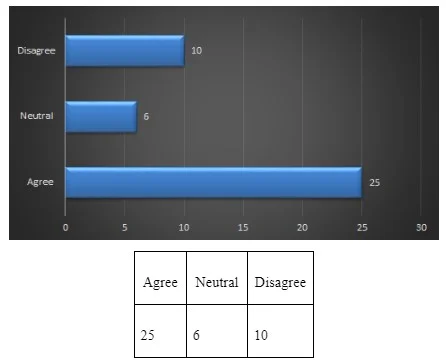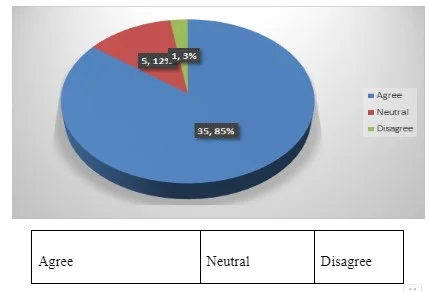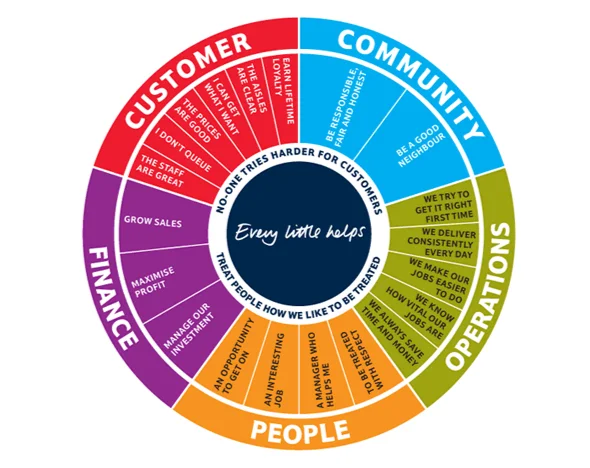Unveiling Gender Disparities in the Workplace
Introduction
This research is going to highlight one of the most crucial topics of this era which is ‘Why do women earn less than men and have poorer career prospects. This study is an investigation into employment and the issues affecting female workers in the UK. “In the UK, 15.49 million women aged 16+ were in employment in October-December 2020, down 117,000 from a year ago (commonslibrary.parliament.uk, 2021)”. The female employment rate was 71.8%, down from a record high of 72.4% a year previously. Whereas the male employment rate was 80.6%. "Men are more likely than women to be involved in "total early-stage entrepreneurial activity," which includes owning or running a business less than 3.5 years old (commonslibrary.parliament.uk, 2021)". Some important aspects that are identified to be affecting women's career prospectus are social norms, gender biases, maternity leave, and age-old thought of non-equal pays. For assistance with understanding the deeper nuances of these issues, consider seeking guidance from experts in the field, such as those offering UK dissertation help.
Be it the public or private sector such events are occurring now and then. "In January 2021, 10 women were serving as Head of State and 13 serving as Head of Government. At 34%, the UK is in 38th position for the proportion of women in the lower (or only) house of parliament” (commonslibrary.parliament.uk, 2021). Hence, the scenario makes it important to identify the statistics and research on the components contributing to such discrimination.

Aims and objectives
This study aims to identify why women are getting fewer career opportunities and earning less as compared to men. It also focuses on employment issues affecting female workers in the UK.
Objectives of this research are as follows:
To argue that cultural and social norms largely impact the differences between male and female employment among countries
To understand the relationship between economic development and female employment
To identify how work stress is influencing gender diversity in the workplace
To explore the impact of patriarchy on women’s work-life balance
To evaluate the why justification of gender pay in the workplace affects the employability of women
To observe how social restrictions are preventing women from being successful
Literature Review
Social Norms as a Barrier to Women’s employment in Developing Countries
Social barriers to women’s participation in developing countries are counted upon as a part of mitigating employment standards. Usually, the women are found to be managing all household duties and most importantly they are responsible for child care. In developing countries, a woman has to fill up the checklist of all these duties and then only she becomes capable of going to work. As married women are held responsible for the COVID-19 pandemic, it has increased the care burden of families on women (Power, 2020). The care economy is termed as invisible and unpaid work of the women. Globally, women are responsible for 75% of the core household work, which is unpaid and becomes a burden on women's careers.
Cultural and educational barriers toward employability development of women
In the UK, cultural diversity is observed which contributes to the development of women's employability standards. Females are seen to be less interested in entrepreneurship and the reason is cultural upbringing and educational constraints. In many cultures, women are restricted from achieving a higher degree that allows lesser development of employability skills. Women are deprived of the chance of working abroad regardless of their capability (Adisa, Abdulraheem, and Isiaka, 2019). As a result, the earning options of women go down. In some cultures, wearing hijab is mandatory for women which somewhat limits freedom of work for them
Investigating the impact of patriarchy on women’s work-life balance
Male dominance and living in a society where female safety is degrading every day throws challenges to the women on an everyday basis for managing their careers. "Subordination on females along with the domestic and gender-based division of labor and higher patriarchal proclivities among men contribute to the patriarchal society (Jayachandran, 2021)". Strong patriarchal norms negatively affect female employees' productivity, organizational effectiveness, and punctuality. Moreover, the pandemic response is gender regressive. According to the UN, unpaid care work has increased due to children being out of school. By default women are responsible to manage their work from responsibilities along with the food and hygiene management of their kids.
Identifying work stress as a threat to gender diversity
There are choices of industries where women's talents have flourished. For example, women are doing excellent in the teaching profession, however, they might lag in handling the construction industry. The work stress is more and shifts are of odd time which becomes a discomfort for a woman to run a family. Moreover, the construction industry is notorious for its frequent interpersonal and inter-organizational conflicts. On the other hand, it is observed that female participation has reduced the conflicts to a large amount (Sunindijo, and Kamardeen, 2017). Females are however deprived of the opportunity to lead the way as they are considered noncapable of active coping.
Justifying gender pay and gender discrimination in the workplace
The issue of gender inequality has given rise to numerous policies in advanced industrial countries. All of these are evidence of the unequal gender pay and giving lesser opportunities to women to grow and progress in their life. It is identified that median hourly pay for full-time employees was 7.4% less for women than for men in April 2020 (commonslibrary.parliament.uk, 2021). This piece of information shows how the discrimination is carried out even in the name of motherhood the gender diversity is impacted largely. Though the Civil Rights Act 1964 and Equal pay act of 1963 are in action some organizations are not applying them. Revisioned Equality act of 2010 also prevents organizations from practicing such lame activities of not giving pay raise to women employees or finding them incapable of managing leadership duty.
Methodology
Research Philosophy
This study aligns with pragmatism, positivism, realism, and interpretivism. In the case of pragmatism that allows mixed or multiple data collection. In positivism, the data is highly structured and large samples are assigned for the research. The measurement in this case can be for quantitative and qualitative purposes. In the case of realism, the method must be fit into the subject matter whereas in interpretivism there are small samples and qualitative investigation performed. The use of positivism is important since it uses “scientific evidence such as experiments, statistics, and qualitative results to reveal a truth about the way society functions (Sahu, and Singh, 2016)”.
Research Approach
Research approaches are identified as inductive, abductive, and deductive. Abductive theories are associated with producing hypotheses and theories. It is observed that “inductive reasoning aims at developing a theory while deductive reasoning aims at testing an existing theory. Inductive reasoning moves from specific observations to broad generalizations, and deductive reasoning the other way around (Walter, and Andersen, 2016.)”. Hence, the applicable theory is deductive. Several theories and discussions are done on women's employability and this research aims to identify the exact consequences of those theories.
Research Design
Research design is applicable in terms of exploratory, explanatory, and descriptive. Explanatory research is an approach that discovers details of a phenomenon that predicts future occurrences. Relationships between variables are studied in this research type (Devi, 2017). On the other hand, exploratory research focuses on identifying new theories and finding the relevance to the research unit. The descriptive study also focuses on the components of how different demographics respond to certain variables. Descriptive study is defined as "observational studies which describe the patterns of disease occurrence about variables such as person, place and time". Hence, in this case, the descriptive study should be applied.
Data types
There are two types of data available in research. One data is primary and another one is secondary. These data types are divided into further two methodologies which include qualitative and quantitative components. Now, in this case, primary quantitative and secondary qualitative types of data can be applied.
Data collection method
In the primary quantitative method, the method is a survey. Generalizing a survey helps in understanding the knowledge of people and how they are reacting to the research topic (Deb, Dey, and Balas, 2019). In the case of secondary qualitative, the thematic analysis will be presented.
Sample Size
The sample size is identified to be 41 irrespective of men and women. The chosen age group for the survey is identified to be residing from 18 to 58 years. A set of 7 questionnaires will be asked to the participants to gain answers from them. Random sampling techniques will be used for data collection. For, secondary analysis collection of journal data is seen which is 20 in number.
Research Ethics
None of the participants will be forced to give an opinion. There will be no manipulation of data seen. As a part of managing research, confidentiality and data security will also be maintained (Pandey, and Pandey, 2015). All participants' consent will be taken for asking questions and no personal questions will be asked.
Theoretical Perspectives
Female participation in the labor force has been potentially increased over time worldwide. However, for the UK, there are some areas where the uneven distribution of economic conditions, lack of female educational infrastructure is preventing women from receiving attractive job offers. Theories that can be aligned in this context is:
Walby’s theory: This theory explains that six patriarchal structures restrict women and maintain male domination. Walby calls household work the patriarchal relations of production. Also, women are exploited at work in terms of payments. Walby argues, “women are more collectively separated from power, wealth, and influence than men are". The existence of these structures has been identified to be restricting the freedom to live life freely and enhance life chances compared to men (open access.city.ac.uk, 2021). Social organization is marked by the supremacy of the family and men are always trying to take control which applies restriction to women 's rights. Even in today’s era, property rights are passed to the male line while eroding female autonomy. Thus, females are seen to be exploited and becoming economically poorer.
Findings and analysis
Results
Primary quantitative survey results are as follows:
Q1: Do you think women are being deprived of equal career growth opportunities like men?

Q2: Do you think the gender pay gap is decreasing the opportunity for women to earn more?

Q3: Do you believe a positive relationship exists between economic development and female employment

Q4: Do you think cultural and social norms largely impact the differences between male and female employment among countries?

Q5: Do you think male dominance in society acts as a barrier to women's career growth?

Q6: Inappropriate application of labor laws and inadequate educational opportunity are restraining women from being successful

Q7: Do you acknowledge that government policies are supporting women laborers in the UK?

Q8: Do you believe women are deprived of participating in leadership roles?

Now that the results have been achieved, it can be discussed that most of the people in the UK are aware of the fact that huge gender discrimination is going on inside the country. It is relevant in terms of the pay scale and work opportunities. Specifically, women are restricted to join leadership positions (Verniers, and Vala, 2018). 20 people have accepted the fact that women are deprived of participating in leadership roles. Moreover, 18 people have accepted the fact that government policies are in favor of women that are trying to secure a job position in the market. Inappropriate application of labor laws and inadequate educational opportunities are restraining women from being successful and 39 people have supported the facts. 35 people agreed that a male dominant society discourages women from being successful in life. The majority of people have accepted the fact women do not get additional chances of career growth in their life due to the application of social and cultural norms on them. It is also observed that the gender pay gap is decreasing the opportunities for improved career components. Dominance from family and socio-cultural aspects are reducing the chances of career improvement in women.

Discussion
Thematic analysis can be conducted as a part of managing secondary qualitative data in this research. All collected data are from recognized sources and cited in accordance to maintain authenticity.


Conclusion
The methodological strategy incorporated within this study is effective and innovative. Here, data on women's collective growth structure is discussed. Women are seen to be more focused on the conflict management aspect. Regular team meetings have been conducted to successfully carry out the research. An appropriate schedule was designed to ensure that the duties are performed by the team on time. All data is ethically organized and presented. Thorough statistics without any adulteration are presented for the sake of audience understanding of women's employability issues.
References
Books
Deb, D., Dey, R. and Balas, V.E., 2019. Engineering research methodology: a practical insight for researchers. Springer.
Devi, P.S., 2017. Research methodology: A handbook for beginners. Notion Press.
Sahu, S.K. and Singh, T.J., 2016. Research methodology: Latest edition. SBPD Publications. Walter, M. and Andersen, C., 2016. Indigenous statistics: A quantitative research methodology. Routledge.
Journals
Adisa, T.A., Abdulraheem, I. and Isiaka, S.B., 2019. Patriarchal hegemony: Investigating the impact of patriarchy on women’s work-life balance. Gender in Management: An International Journal.
Jayachandran, S., 2021. Social norms as a barrier to women’s employment in developing countries. IMF Economic Review, 69(3), pp.576-595.
Kalaitzi, S., Czabanowska, K., Fowler-Davis, S. and Brand, H., 2017. Women leadership barriers in healthcare, academia and business. Equality, Diversity and Inclusion: An International Journal.
Mehtap, S., Pellegrini, M.M., Caputo, A. and Welsh, D.H., 2017. Entrepreneurial intentions of young women in the Arab world: Socio-cultural and educational barriers. International Journal of Entrepreneurial Behavior & Research.
Pandey, P. and Pandey, M., 2015. Research methodology: Tools and techniques.
Power, K., 2020. The COVID-19 pandemic has increased the care burden of women and families. Sustainability: Science, Practice and Policy, 16(1), pp.67-73.
Sunindijo, R.Y. and Kamardeen, I., 2017. Work stress is a threat to gender diversity in the construction industry. Journal of Construction Engineering and Management, 143(10), p.04017073.
Verniers, C. and Vala, J., 2018. Justifying gender discrimination in the workplace: The mediating role of motherhood myths. PloS one, 13(1), p.e0190657.
Looking for further insights on Understanding the Concept of "Child" in Sociological Contexts? Click here.
- 24/7 Customer Support
- 100% Customer Satisfaction
- No Privacy Violation
- Quick Services
- Subject Experts



